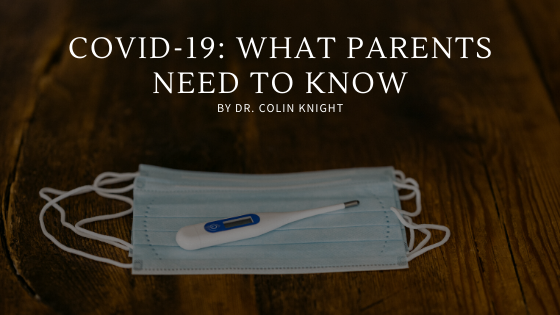I’m a parent and a doctor. I am neither a virologist (a scientist who studies viruses) nor an infectious diseases specialist, however, I’d like to summarize what I know about the disease that is disrupting our lives to an unprecedented degree.
COVID-19 (coronavirus disease) is the disease that is caused by a newly discovered coronavirus. The virus is named SARS-CoV-2 (severe acute respiratory syndrome coronavirus 2). A virus is an infectious agent that is too small to be seen with light microscopes that causes infections by invading cells. Most viruses, upon entering a cell, commandeer the cell’s internal mechanisms and produce more viruses. This invasion usually kills the host cell. In the case of SARS-CoV-2, the virus starts reproducing in the upper airways (nose, throat) and moves down into the lungs where it can cause a potentially lethal lung infection — pneumonia. Virologists group viruses into different families and SARS-CoV-2 is part of a large family of viruses that may cause humans or other animals to become ill. They are called coronaviruses because they have crown-like spikes; corona being latin for crown. Other members of the family cause diseases that you may have heard of in the past like Middle East Respiratory Syndrome (MERS) and Severe Acute Respiratory Syndrome.
As parents, we can be somewhat relieved that it appears that children don’t get too ill when they have COVID-19. As I write this, there are two letters published in the New England Journal of Medicine that report case series in children. The first was published on 3/12/20 by Liu and others. They examined a group of 366 children hospitalized for respiratory infections over a 1-week period in January 2020 in Wuhan, China. They found that influenza was the most common diagnosis (~12% of the group) but found that 6 patients (1.6% of the group) have COVID-19. None of the 6 children had any medical problems. All of them had fever and cough and 4 of them had vomiting. Four of the six had pneumonia and one was admitted to the ICU. All recovered after an average hospital stay of one week.
A week later, Lu and others reported that of 1,391 children tested over a 4-week period from the end of January to the end of February 2020, 171 (12% of the group) had positive tests for SARS-CoV-2. Of this group, 40% had a fever. They also report that cough and redness at the back of the throat were common. Fifteen percent had no symptoms and normal x-rays. Of the total group, only 3 required ICU care (<1%) and all three had another medical problem. One of those 3 patients died. The authors concluded that “in contrast with infected adults, most infected children appear to have a milder clinical course.”
To summarize, the initial evidence out of China is that most respiratory illness in the area of the initial outbreak was not COVID-19 and, unlike in adults, most children with COVID-19 do not require critical care and survive. However, if your children have underlying medical problems, they could be among the unlucky few who become critically ill.
Now, our children still could transmit the disease, and I imagine most of you, like me, do not want our children to get sick at all. The best way to prevent an infection (and this includes other infections like the flu and colds) is basic hygiene. Washing hands with soap and water tops the list of items that the CDC recommends. It doesn’t take much to guess that not hanging out with people who are sick is wise too. Additionally, the CDC is recommending that you clean and disinfect commonly touched areas daily. There’s been much fuss in the news lately about not being able to get disinfectant wipes, but you can easily make a disinfectant with bleach: Mix one tablespoon of bleach with 1 gallon of water to make a sanitizing solution for surfaces around the house. In case an area has been soiled with diarrhea or vomit, a stronger solution is called for: 2 tablespoons of bleach in 1 quart of water.
COVID-19 is a new illness. There is no known effective medication. Doctors and scientists are actively looking for effective treatments. Likewise, they are also working on developing an effective vaccination. It could take months to years before there is good evidence supporting use of currently available medications or for a new one to be developed. Likewise, a safe and effective vaccination is at least a year away.
In the meantime, what should you do if your child becomes sick? If they are having trouble breathing (can’t talk, for example) you should call 911 or take them to the nearest ER (preferably one with pediatric capabilities). If their symptoms are milder, but you are worried about them, I would recommend speaking to your pediatrician on the phone. It is not good for the doctor or the other patients in the office to be unnecessarily exposed to patients with COVID-19. As I write this, most doctor’s offices and even hospitals in the United States will not be able to easily test for the virus. I anticipate that will be changing in the future. You will not be able to easily find out if the illness is COVID-19 or not unless your local public health department policies recommend testing. Here’s a great web page with tips on what to do if your child is sick during the COVID-19 pandemic. I will summarize: stay calm, call your doctor, don’t expose others (stay home), if possible, isolate the child in one part of the house away from others including using a designated bathroom, continue hand washing and sanitizing (see above), encourage rest and fluids,and watch for difficulty breathing.
